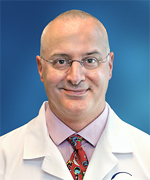Beckwith-Wiedemann Syndrome
What is Beckwith-Wiedemann syndrome?
Beckwith-Wiedemann syndrome is a disorder that is characterized by overgrowth of multiple organ systems. Individuals with this disorder have an increased risk of tumor development in early childhood (prior to 8-10 years of age). Symptoms may include:
- enlarged tongue (macroglossia),
- asymmetric overgrowth of one side of the body (hemihypertrophy), which generates leg length discrepancy,
- umbilical hernia,
- enlarged organs,
- kidney abnormalities,
- certain tumors,
- low blood sugar in the newborn,
- facial abnormalities,
- heart abnormalities,
- advanced bone age, and
- overall excessive growth of the newborn (macrosomia).
Not all patients with Beckwith-Wiedemann syndrome have all the above-mentioned symptoms; the syndrome may present with varying combinations of the symptoms.
The enlarged tongue and excess growth are usually present at the time of birth. Though growth may seem in excess at birth, growth rate usually slows down by puberty, and people living with the syndrome wind up at a height that is in the upper end of a normal range. Mental and social development is usually normal in these children, unless there is a coexistence of genetic disorders or prolonged and untreated low blood sugar in the newborn period. Children with Beckwith-Wiedemann syndrome have increased risk of cancerous and non-cancerous tumors. It is important to note that development of these tumors is uncommon in older children and adults, and people with the syndrome have a normal life expectancy. The enlarged tongue (macroglossia) may cause difficulty in acquiring adequate nutrition with oral feeds and can also lead to sleep apnea. The asymmetric growth of one side of the body could lead to a significant leg length discrepancy.
What causes Beckwith-Wiedemann syndrome?
Beckwith-Wiedemann syndrome is predominantly caused by genetic irregularities. There is a family history of the syndrome present in 15% of cases.
How common is Beckwith-Wiedemann syndrome?
Beckwith-Wiedemann syndrome occurs once in every 13,700 births worldwide. It is equally found in all populations and in both sexes.
How is Beckwith-Wiedemann syndrome diagnosed?
There are no existing specific diagnostic criteria for Beckwith-Wiedemann syndrome. Children with a few of the symptoms are still at increased risk of developing tumors, and therefore children showing minimum symptoms of the disorder spectrum should receive tumor surveillance and molecular testing. Genetic testing and prenatal diagnosis are the two main methods of early detection of the syndrome.
What are the treatment options for Beckwith-Wiedemann syndrome?
Newborns with low blood sugar need immediate treatment to reduce the risk of neurological complications. An abdominal wall repair may be needed in the case of an umbilical hernia. Macroglossia (enlarged tongue) management sometimes requires intubation, a sleep study, specialized feeding mechanisms, tongue reduction surgery and follow-up with plastic surgeons and speech pathologists. Tumors, if present, should be treated by a pediatric oncologist.
Orthopedic intervention is usually needed to correct a significant limb length discrepancy due to hemihypertrophy. In most cases, the treatment of choice is epiphysiodesis—slowing of the growth on the longer side. The surgery involves closing the growth plate of the larger/longer leg before puberty. In some cases, limb lengthening is a better option. This involves making a bone cut (osteotomy) and applying either an internal lengthening nail or external fixation device to control the lengthening process.
Children with the syndrome should be monitored for signs and symptoms of low blood sugar, and routinely screened for developmental abnormalities and abdominal tumors at regular intervals by ultrasound until eight years of age. Parents should receive genetic counseling about the cause of the syndrome and possibility of recurrence in the next child.
Why choose the International Center for Limb Lengthening for treatment of Beckwith-Wiedemann syndrome?
The International Center for Limb Lengthening helps provide orthopedic treatment to address the limb length discrepancy that develops in children living with Beckwith-Wiedemann syndrome. Treatment of limb length discrepancies is a complex process. Your doctor at the International Center for Limb Lengthening will take the time to make sure you understand all your options and then will customize your treatment to meet your child’s specific needs. Our patients benefit from our team-centered approach with world-renowned surgeons and specialized physician assistants, nurses and physical therapists. We help patients with Beckwith-Wiedemann syndrome achieve their best possible orthopedic result.


